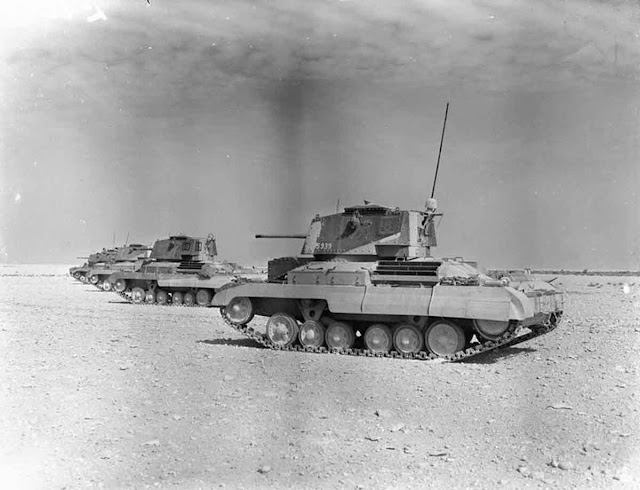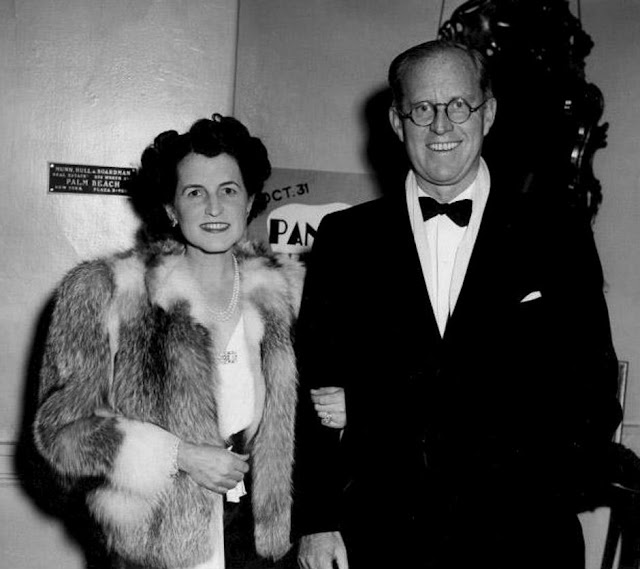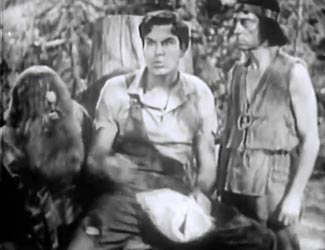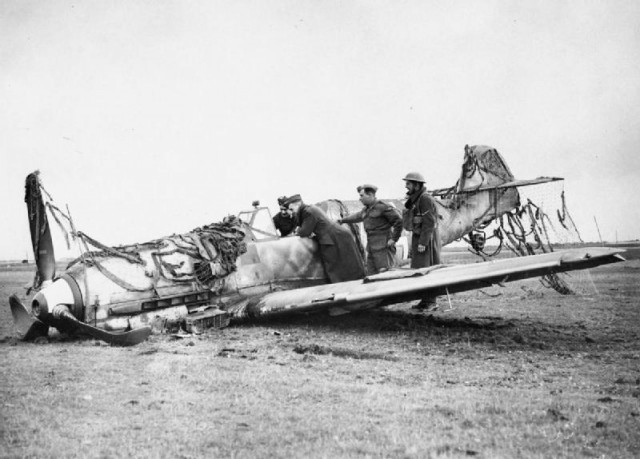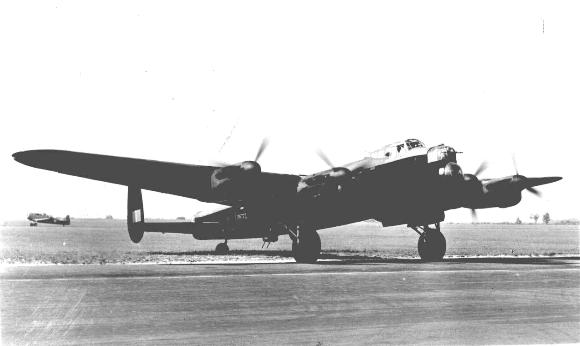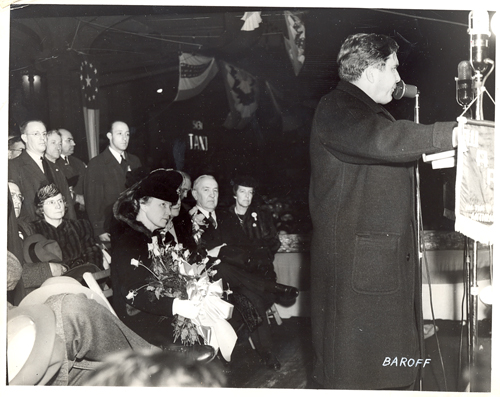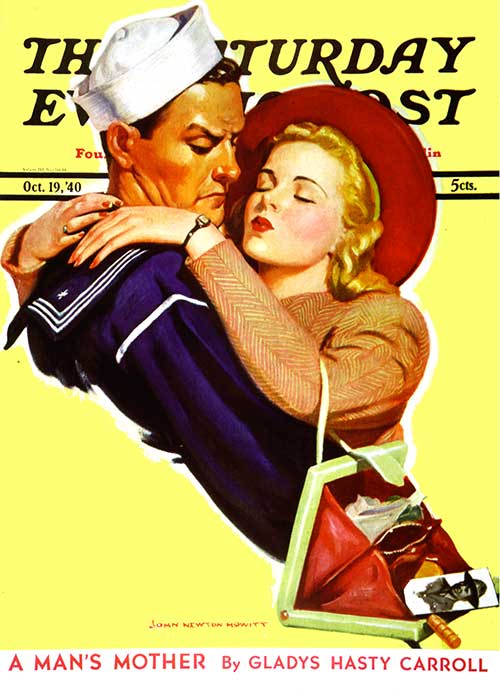Italian/Greek Campaign: The front has stabilized for the time being on 19 January 1941, as much due to the weather as by Italian resistance to the continuing Greek offensive. The RAF bombs Berat, while the Luftwaffe performs reconnaissance over Athens and Piraeus - the main supply port being used by the British.
Hitler and Mussolini agree that the Wehrmacht will not assist the Italians in Albania - at least not directly, or right away. Hitler tells Mussolini that, while the ground war, for now, remains in his hands, he will invade Greece at the first sign of danger to the vital Romanian oil fields. The safety of the oil fields remains a priority for Hitler throughout the war and informs many of his major - and most disastrous - decisions.
East African Campaign: Today generally is considered the beginning of the East African campaign. British Middle East Commander General Archibald Wavell has been assembling large forces in Sudan. He plans attacks from three directions: an advance from Sudan; an offensive from Kenya; and amphibious landings to retake British Somaliland. They face 17,000 Italian troops along the border.
The British send the 4th and 5th Indian Divisions, along with elements of the Sudan Defence Force (all under Major General William Platt) across the border Sudan/Ethiopian border in force. The 4th Indian had participated in the opening stages of Operation Compass in Egypt during December. The ability by the British to mount offensives at the same time on two completely separate axes is an indication of growing British military might; but, more significantly, it is a sign of abject Italian military weakness (as proven by British military failures against the Germans in Greece a few months hence). It also is a complete vindication of Winston Churchill's edgy decision in August 1940 to start sending his Winston Special convoys carrying troops from England to the Middle East despite the looming threat of a German invasion.
The Italians under Lieutenant-General Luigi Frusci having abandoned the key rail junction of Kassala, Sudan, the British take possession without any fighting. This opens a path for a thrust toward Ethiopia. Another thrust is started in Kenya. The aim is the complete expulsion of Italian forces from Italian Somaliland, Ethiopia, Eritrea, and British Somaliland. The RAF is active, bombing Italian assets in the region.
The British have been studiously breaking Italian codes and thus have major advantages in the fighting. Italian commander and Viceroy of Italian East Africa the Duke of Aosta is competent, but his forces are completely out-matched and the British know his orders almost as quickly as his own troops do. The British also are using newly arrived Ethiopian Emperor Haile Selassie to stir up the natives against the Italians who had deposed him.
European Air Operations: The Luftwaffe resumes its raids with an attack by 62 bombers on Southampton during the night. Another raid, during the day, targets RAF Feltwell. The RAF sends a few planes across to bomb French targets.
Following up on a story from the 17th and 18th, the Royal Navy finally gets a launch (the Lerwick lifeboat) to Fair Isle, Orkney to pick up three downed Luftwaffe airmen. They were shot down on the 17th whilst on a reconnaissance mission. The pilot, Karl Heinz Thurz, turns 21 today. The boat takes them back to the Scottish mainland for processing.
Battle of the Atlantic: Dutch 312 ton freighter Diana hits a mine and sinks in the Bristol Channel south of Cardiff. This area has seen numerous vessels sunk by mines recently. There are two survivors, the rest of the crew perishes.
The Luftwaffe hits 4909-ton British freighter Bonnington Court in the Thames Estuary near the Sunk Light Vessel. There are two deaths and the ship is sunk. Another ship, 2294 ton British freighter Zelo, also is damaged in this attack.
The Luftwaffe damages destroyer HMS Boreas during an attack on London. The Boreas already is under repair for an earlier incident.
Royal Navy corvette HMS Honeysuckle hits a mine off the Bar Light Vessel in the Thames Estuary and proceeds to Liverpool for repairs.
Royal Navy destroyer HMS Galatea returns to the fleet after being under repair at Chatham since 17 October 1940.
Convoy OG 50 departs from Liverpool, Convoys FN 387 and 388 depart from Southend, Convoy BS 13 departs Suez, Convoy SLS 63 departs from Freetown.
British battleship Prince of Wales (Captain John Leach), a member of the King George V class, is commissioned. This is done prematurely by normal standards, as numerous tests have not yet been done on her (compartment air tests, ventilation tests and thorough testing of her bilge, ballast and fuel-oil systems). The main guns also have many issues that need to be worked on but are not yet apparent. The Admiralty is rushing ships into service due to the looming presence of German battleships Tirpitz and Bismarck.
U-77 (Oberleutnant zur See Heinrich Schonder) is commissioned.
Battle of the Mediterranean: The British and Australian troops surrounding Tobruk continue their preparations for the conquest of Tobruk. This operation originally was scheduled to begin on the 20th but was postponed for 24 hours due to sandstorms. The weather forces the Royal Navy to cancel Operation IS 1, the bombardment of Tobruk by Monitor HMS Terror, gunboat HMS Aphis, and several other ships. The weather damages Aphis, which has to be escorted to Port Said for repairs.
The Illustrious Blitz continues. The Luftwaffe's Fliegerkorps X once again attacks Malta's Grand Harbour. It is a fierce attack conducted by 80 aircraft in two separate raids. The Luftwaffe scores two misses on Royal Navy aircraft carrier HMS Illustrious and causes it some further damage below the waterline. This damage includes damage to the port turbine and flooding of a boiler room. The shock of the concussions throws the Illustrious up against the wharf, likely damaging it, too. Afterward, the carrier settles down at the stern. Extensive damage is done to the port itself, with the Germans using 1000 kg high explosive bombs, twice the heaviest used previously. A couple of destroyers, HMS Imperial and Decoy, also sustain inconsequential damage.
Fliegerkorps X is under direct orders from Hitler to sink Illustrious, and its presence at Malta has incurred the full fury of the recently arrived Stukas and Junkers Ju 88s based at Catania, Sicily. Senglea suffers more damage, with the church of Our Lady of Victory completely wrecked, and a priory of the Dominican Fathers at Vittoriosa also is destroyed. The Luftwaffe has done more damage in furtherance of the Axis cause to Malta in its first week in the Mediterranean than the Italians have done since entering the war.
The RAF has hits hands full on Malta. A Fairey Fulmar of No. 806 Squadron - part of Illustrious' complement, now based on Malta - shoots down a Junkers Ju 87 Stuka during the attack, but then is itself shot down (two crew rescued). Governor Dobbie says in his daily report:
Hurricane pilot Flight Lieutenant Jay MacLachan becomes an ace today, downing his fifth enemy aircraft.
Italian submarine Neghelli spots Convoy AS 12, a Piraeus to Alexandria convoy. It attacks Greek destroyer Psara (D 96) in the Aegean off Crete. The destroyer survives the attack, apparently, the torpedo misses. The Neghelli then torpedoes 7264-ton British freighter Clan Cumming near San Giorgio Island. The freighter makes it back to Piraeus. Destroyer HMS Greyhound (Commander W.R. Marshall-A'Deane) then sinks the Neghelli (46 deaths).
German/Italian Relations: Hitler continues his current round of diplomatic meetings (he likes to schedule meetings with all of his allies/vassals in succession). Mussolini arrives for two days of meetings at Berchtesgaden - a location into which some read some significance because previous meetings have been at intermediate locations such as Florence (and others will be in the future, too, depending on how the war is going). Italian Foreign Minister Count Ciano - always a useful source because of his comprehensive diary - records that Mussolini is "frowning and nervous" on the ride up over the Alps (a scenic ride through Innsbruck). Hitler is friendly, an attitude he retains throughout their relationship. He does not have many peers who are his allies or friends, so Hitler appears to take particular pains to preserve the relationship with Mussolini - the only one that he does have.
They discuss Hitler's initial plans to send forces to the Mediterranean - outlined in Hitler's most recent Fuhrer Directive, though Mussolini presumably doesn't know about that, or at least technically shouldn't unless Hitler personally gives him a copy or tells him about it verbally. Mussolini is planning his own offensive to retake the Klisura Pass, to take place in about a week's time.
This conference continues the gradual shift in the relationship between the two men. In the 1920s, Mussolini was dismissive of the Germans and rarely even bothered to meet with Hitler's emissaries, such as Hermann Goering (who waited months for meetings). Germany's early military victories in Poland, France, and Scandinavia completely leveled that playing field, and now the Italian reversals in North Africa and particularly Albania have turned Italy into little more than a German satellite. Italy remains independent and Mussolini capable of independent action, but largely because Hitler still views Italy as his most significant ally which is better to have at his side than helping the British.
German/US Relations: Secretary of State Cordell Hull quickly responds to German Chargé d'Affaires Hans Thomsen's complaint yesterday about the "flag incident" at the German consulate in San Francisco. In diplomatic terms, this is like traveling at the speed of light. Hull promises a complete investigation (which will conclude and whose results will be communicated to the Germans on 25 May 1941).
Romania: The Iron Guard (Legionnaire) has been conducting a series of "lectures" throughout Romania to its adherents that conclude today. These have inflamed tensions. It would not take much to set off a major revolt against the Antonescu government. The Iron Guard has been agitated since the reburial of its founder in November, and they view Antonescu as part of the forces that are oppressing them. Horia Sima remains effectively in charge of members of the Iron Guard rather than the government; they populate large proportions of the Security Police and the Bucharest police and follow his orders even though he is not in the government's chain of command. The Iron Guard also has a firm hold of the media and widespread support in the countryside.
Indonesia: Despite the recent French naval victory at Koh Chang, the Thai forces retain the initiative on land. The French retreat behind the Mekong River in the north.
China: The Nationalist Chinese, following an order from Chiang Kai-shek, disband the Communist New 4th Army near Maolin in the Yangtse Valley.
January 2, 1941: Camp Categories
January 3, 1941: Liberty Ships
January 4, 1941: Aussies Take Bardia
January 5, 1941: Amy Johnson Perishes
January 6, 1941: Four Freedoms
January 7, 1941: Pearl Harbor Plans
January 8, 1941: Billions For Defense
January 9, 1941: Lancasters
January 10, 1941: Malta Convoy Devastation
January 11, 1941: Murzuk Raid
January 12, 1941: Operation Rhubarb
January 13, 1941: Plymouth Blitzed
January 14, 1941: V for Victory
January 15, 1941: Haile Selassie Returns
January 16, 1941: Illustrious Blitz
January 17, 1941: Koh Chang Battle
January 18, 1941: Luftwaffe Pounds Malta
January 19, 1941: East African Campaign Begins
January 20, 1941: Roosevelt 3rd Term
January 21, 1941: Attack on Tobruk
January 22, 1941: Tobruk Falls
January 23, 1941: Pogrom in Bucharest
January 24, 1941: Tank Battle in Libya
January 25, 1941: Panjiayu Tragedy
January 26, 1941: Churchill Working Hard
January 27, 1941: Grew's Warning
January 28, 1941: Ho Chi Minh Returns
January 29, 1941: US Military Parley With Great Britain
January 30, 1941: Derna Taken
January 31, 1941: LRDG Battered
2020
Hitler and Mussolini agree that the Wehrmacht will not assist the Italians in Albania - at least not directly, or right away. Hitler tells Mussolini that, while the ground war, for now, remains in his hands, he will invade Greece at the first sign of danger to the vital Romanian oil fields. The safety of the oil fields remains a priority for Hitler throughout the war and informs many of his major - and most disastrous - decisions.
East African Campaign: Today generally is considered the beginning of the East African campaign. British Middle East Commander General Archibald Wavell has been assembling large forces in Sudan. He plans attacks from three directions: an advance from Sudan; an offensive from Kenya; and amphibious landings to retake British Somaliland. They face 17,000 Italian troops along the border.
The British send the 4th and 5th Indian Divisions, along with elements of the Sudan Defence Force (all under Major General William Platt) across the border Sudan/Ethiopian border in force. The 4th Indian had participated in the opening stages of Operation Compass in Egypt during December. The ability by the British to mount offensives at the same time on two completely separate axes is an indication of growing British military might; but, more significantly, it is a sign of abject Italian military weakness (as proven by British military failures against the Germans in Greece a few months hence). It also is a complete vindication of Winston Churchill's edgy decision in August 1940 to start sending his Winston Special convoys carrying troops from England to the Middle East despite the looming threat of a German invasion.
The Italians under Lieutenant-General Luigi Frusci having abandoned the key rail junction of Kassala, Sudan, the British take possession without any fighting. This opens a path for a thrust toward Ethiopia. Another thrust is started in Kenya. The aim is the complete expulsion of Italian forces from Italian Somaliland, Ethiopia, Eritrea, and British Somaliland. The RAF is active, bombing Italian assets in the region.
The British have been studiously breaking Italian codes and thus have major advantages in the fighting. Italian commander and Viceroy of Italian East Africa the Duke of Aosta is competent, but his forces are completely out-matched and the British know his orders almost as quickly as his own troops do. The British also are using newly arrived Ethiopian Emperor Haile Selassie to stir up the natives against the Italians who had deposed him.
 |
| Indian troops of the British Army entering Italian Eritrea on the Atbara River, 19 January 1941. Not the pontoon raft carrying their transport. |
Following up on a story from the 17th and 18th, the Royal Navy finally gets a launch (the Lerwick lifeboat) to Fair Isle, Orkney to pick up three downed Luftwaffe airmen. They were shot down on the 17th whilst on a reconnaissance mission. The pilot, Karl Heinz Thurz, turns 21 today. The boat takes them back to the Scottish mainland for processing.
Battle of the Atlantic: Dutch 312 ton freighter Diana hits a mine and sinks in the Bristol Channel south of Cardiff. This area has seen numerous vessels sunk by mines recently. There are two survivors, the rest of the crew perishes.
The Luftwaffe hits 4909-ton British freighter Bonnington Court in the Thames Estuary near the Sunk Light Vessel. There are two deaths and the ship is sunk. Another ship, 2294 ton British freighter Zelo, also is damaged in this attack.
The Luftwaffe damages destroyer HMS Boreas during an attack on London. The Boreas already is under repair for an earlier incident.
Royal Navy corvette HMS Honeysuckle hits a mine off the Bar Light Vessel in the Thames Estuary and proceeds to Liverpool for repairs.
Convoy OG 50 departs from Liverpool, Convoys FN 387 and 388 depart from Southend, Convoy BS 13 departs Suez, Convoy SLS 63 departs from Freetown.
British battleship Prince of Wales (Captain John Leach), a member of the King George V class, is commissioned. This is done prematurely by normal standards, as numerous tests have not yet been done on her (compartment air tests, ventilation tests and thorough testing of her bilge, ballast and fuel-oil systems). The main guns also have many issues that need to be worked on but are not yet apparent. The Admiralty is rushing ships into service due to the looming presence of German battleships Tirpitz and Bismarck.
U-77 (Oberleutnant zur See Heinrich Schonder) is commissioned.
 |
| Italian submarine Neghelli, sunk today. |
The Illustrious Blitz continues. The Luftwaffe's Fliegerkorps X once again attacks Malta's Grand Harbour. It is a fierce attack conducted by 80 aircraft in two separate raids. The Luftwaffe scores two misses on Royal Navy aircraft carrier HMS Illustrious and causes it some further damage below the waterline. This damage includes damage to the port turbine and flooding of a boiler room. The shock of the concussions throws the Illustrious up against the wharf, likely damaging it, too. Afterward, the carrier settles down at the stern. Extensive damage is done to the port itself, with the Germans using 1000 kg high explosive bombs, twice the heaviest used previously. A couple of destroyers, HMS Imperial and Decoy, also sustain inconsequential damage.
Fliegerkorps X is under direct orders from Hitler to sink Illustrious, and its presence at Malta has incurred the full fury of the recently arrived Stukas and Junkers Ju 88s based at Catania, Sicily. Senglea suffers more damage, with the church of Our Lady of Victory completely wrecked, and a priory of the Dominican Fathers at Vittoriosa also is destroyed. The Luftwaffe has done more damage in furtherance of the Axis cause to Malta in its first week in the Mediterranean than the Italians have done since entering the war.
The RAF has hits hands full on Malta. A Fairey Fulmar of No. 806 Squadron - part of Illustrious' complement, now based on Malta - shoots down a Junkers Ju 87 Stuka during the attack, but then is itself shot down (two crew rescued). Governor Dobbie says in his daily report:
We can take it and enemy morale is visibly affected.The British take comfort in the losses they are extracting on the attacking German aircraft. The loss in morale that Governor Dobbie references shown in less aggressive Stuka attacks. It would make sense that, as the air battle over Malta progresses, the most aggressive pilots would tend to get killed first. However, it appears that British claims of downed Luftwaffe aircraft greatly exceed actual losses - which invariably is the case and nothing special regarding Malta. The RAF has lost just five aircraft so far, while the British claim to have downed over 50 Luftwaffe planes either in aerial combat or by ground fire - an extremely inflated figure similar to wild claims made during the Battle of Britain.
Hurricane pilot Flight Lieutenant Jay MacLachan becomes an ace today, downing his fifth enemy aircraft.
Italian submarine Neghelli spots Convoy AS 12, a Piraeus to Alexandria convoy. It attacks Greek destroyer Psara (D 96) in the Aegean off Crete. The destroyer survives the attack, apparently, the torpedo misses. The Neghelli then torpedoes 7264-ton British freighter Clan Cumming near San Giorgio Island. The freighter makes it back to Piraeus. Destroyer HMS Greyhound (Commander W.R. Marshall-A'Deane) then sinks the Neghelli (46 deaths).
 |
| "Parachute troops on parade in front of a Whitley bomber pressed into service in the airborne role, RAF Ringway, Manchester, January 1941." © IWM (H 6527). |
They discuss Hitler's initial plans to send forces to the Mediterranean - outlined in Hitler's most recent Fuhrer Directive, though Mussolini presumably doesn't know about that, or at least technically shouldn't unless Hitler personally gives him a copy or tells him about it verbally. Mussolini is planning his own offensive to retake the Klisura Pass, to take place in about a week's time.
This conference continues the gradual shift in the relationship between the two men. In the 1920s, Mussolini was dismissive of the Germans and rarely even bothered to meet with Hitler's emissaries, such as Hermann Goering (who waited months for meetings). Germany's early military victories in Poland, France, and Scandinavia completely leveled that playing field, and now the Italian reversals in North Africa and particularly Albania have turned Italy into little more than a German satellite. Italy remains independent and Mussolini capable of independent action, but largely because Hitler still views Italy as his most significant ally which is better to have at his side than helping the British.
 |
| No. 98 at Brookhaven, Mississippi, pulling Train No. 1, January 19, 1941. Photo by C.W. Witbeck/Collection of Louis R. Saillard (Wilmington and Western Railroad). |
Romania: The Iron Guard (Legionnaire) has been conducting a series of "lectures" throughout Romania to its adherents that conclude today. These have inflamed tensions. It would not take much to set off a major revolt against the Antonescu government. The Iron Guard has been agitated since the reburial of its founder in November, and they view Antonescu as part of the forces that are oppressing them. Horia Sima remains effectively in charge of members of the Iron Guard rather than the government; they populate large proportions of the Security Police and the Bucharest police and follow his orders even though he is not in the government's chain of command. The Iron Guard also has a firm hold of the media and widespread support in the countryside.
Indonesia: Despite the recent French naval victory at Koh Chang, the Thai forces retain the initiative on land. The French retreat behind the Mekong River in the north.
China: The Nationalist Chinese, following an order from Chiang Kai-shek, disband the Communist New 4th Army near Maolin in the Yangtse Valley.
January 1941
January 1, 1941: Muselier ArrestedJanuary 2, 1941: Camp Categories
January 3, 1941: Liberty Ships
January 4, 1941: Aussies Take Bardia
January 5, 1941: Amy Johnson Perishes
January 6, 1941: Four Freedoms
January 7, 1941: Pearl Harbor Plans
January 8, 1941: Billions For Defense
January 9, 1941: Lancasters
January 10, 1941: Malta Convoy Devastation
January 11, 1941: Murzuk Raid
January 12, 1941: Operation Rhubarb
January 13, 1941: Plymouth Blitzed
January 14, 1941: V for Victory
January 15, 1941: Haile Selassie Returns
January 16, 1941: Illustrious Blitz
January 17, 1941: Koh Chang Battle
January 18, 1941: Luftwaffe Pounds Malta
January 19, 1941: East African Campaign Begins
January 20, 1941: Roosevelt 3rd Term
January 21, 1941: Attack on Tobruk
January 22, 1941: Tobruk Falls
January 23, 1941: Pogrom in Bucharest
January 24, 1941: Tank Battle in Libya
January 25, 1941: Panjiayu Tragedy
January 26, 1941: Churchill Working Hard
January 27, 1941: Grew's Warning
January 28, 1941: Ho Chi Minh Returns
January 29, 1941: US Military Parley With Great Britain
January 30, 1941: Derna Taken
January 31, 1941: LRDG Battered
2020


